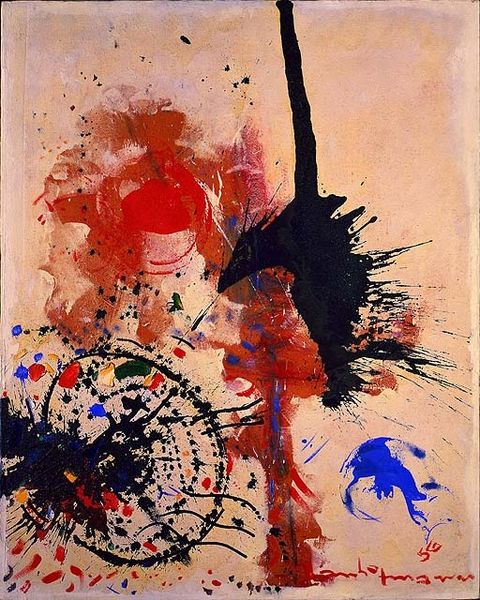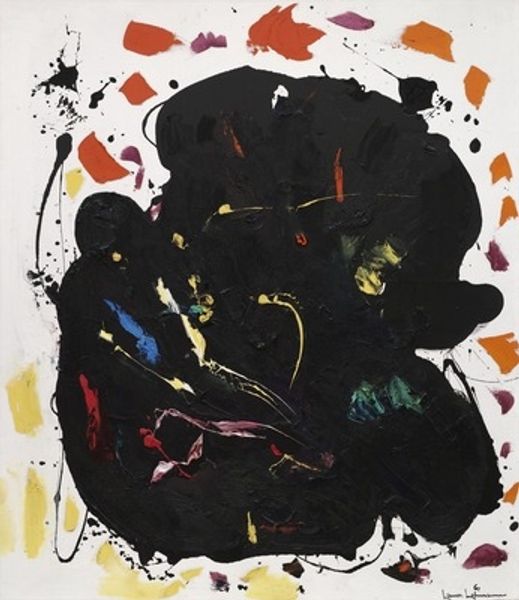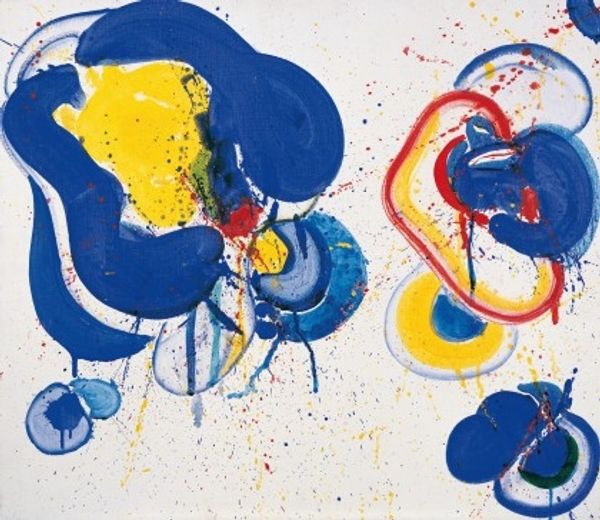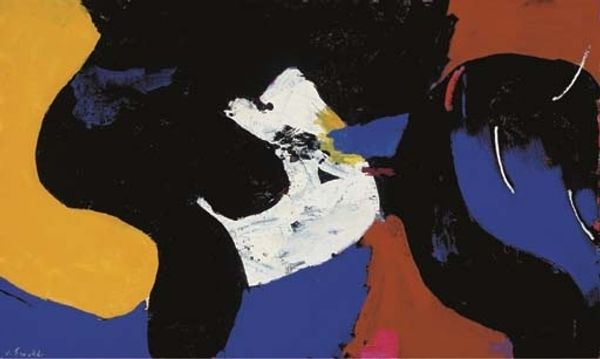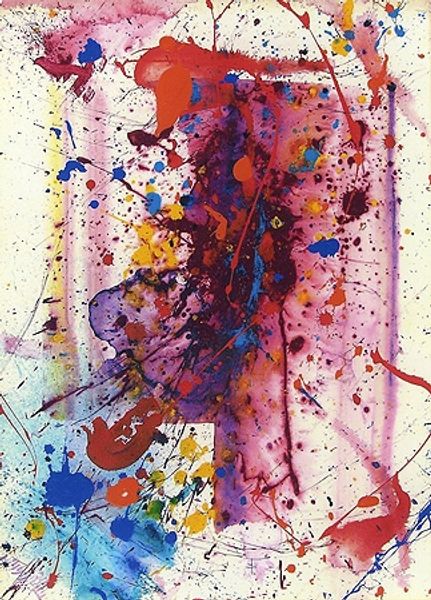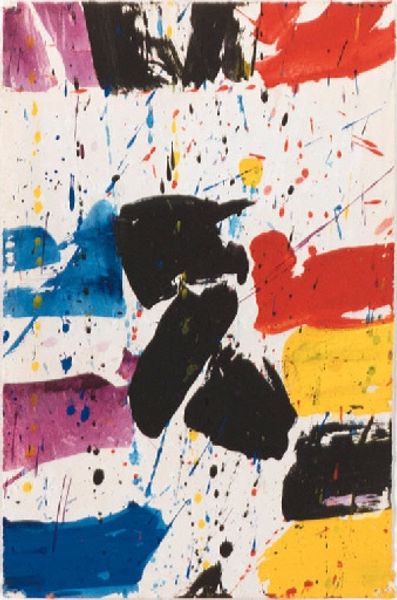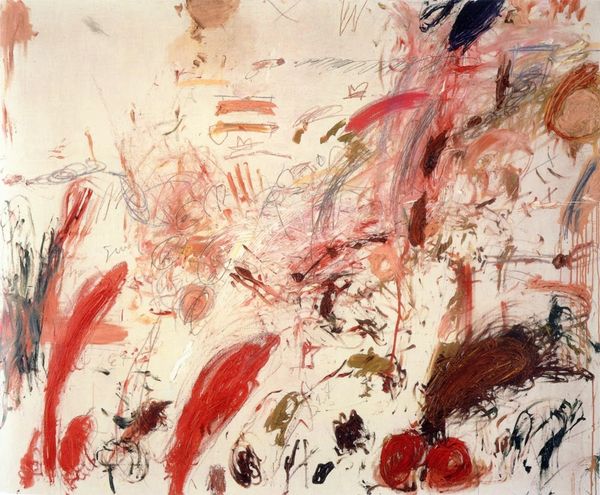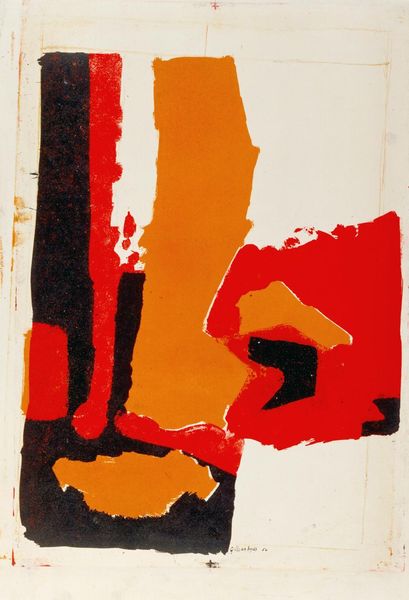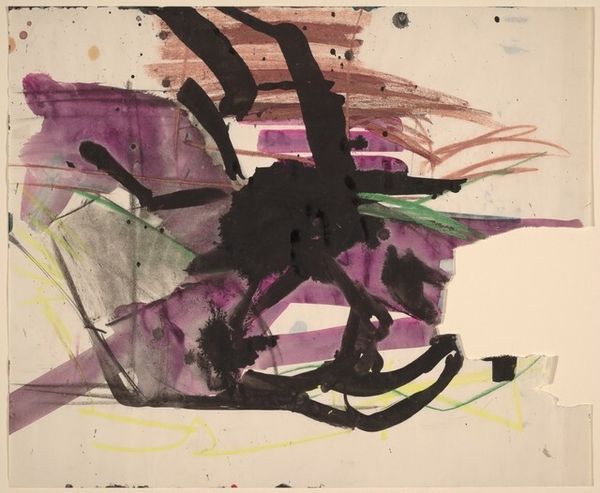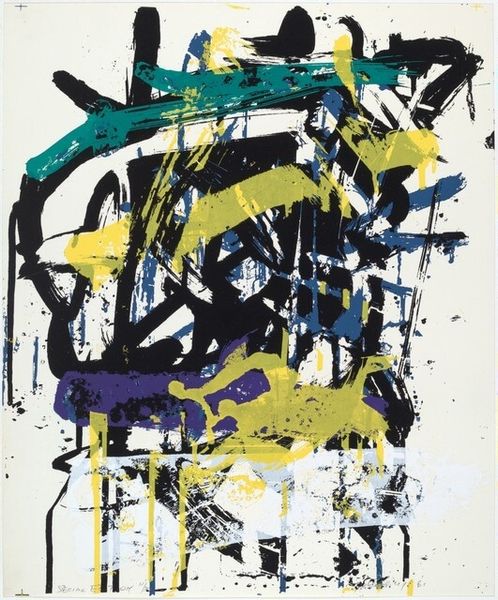
mixed-media, acrylic-paint, impasto
#
action-painting
#
abstract-expressionism
#
abstract expressionism
#
mixed-media
#
acrylic-paint
#
impasto
#
acrylic on canvas
#
abstraction
#
painting art
#
modernism
Copyright: Hans Hofmann,Fair Use
Curator: Hans Hofmann's "Rope-Swinger," completed in 1962, immediately grabs your attention with its visceral energy. Editor: It does! It feels chaotic and improvisational; I'm drawn to the thick application of paint. The impasto seems to fight against the flat plane of the canvas. Curator: Hofmann's late work, particularly from the Abstract Expressionist period, reflects a deliberate engagement with both spontaneity and structure. It is hard not to consider the artist as part of a larger trajectory concerned with representation and identity politics in the post-war context. Editor: Absolutely. Looking at the mixed media application of acrylic paint, it reminds me that this isn’t just about an individual’s outpouring. It's the result of studio practices, available materials, and Hofmann’s deep understanding of modernist abstraction as a set of labor practices. Curator: Consider that "Rope-Swinger" embodies Hofmann's 'push and pull' theory. There's tension evident here: contrasting textures and the placement of rectangular fields of color that are attempting to negotiate space on the picture plane. To my eye, it's not only about the formal arrangement but about an era's anxiety. Editor: I see what you mean, the balance feels precarious, not totally resolved. But the way those splatters interrupt the geometric shapes makes me think about accidental beauty; it shows process so brazenly. It is so performative: you see the traces of the body almost enacting these marks. Curator: And consider what it meant for a German artist arriving in the US to define an American aesthetic! Hofmann renegotiated his identity via abstract language. It reflects his experience of displacement. Editor: You've got me thinking now about how his European training may have informed his work in New York; from the handmade paper and pigment selection. Curator: In its boldness, “Rope-Swinger” becomes not just a canvas but a battleground of ideas and identities in the 1960s. Editor: For me, reflecting on materiality grounds Hofmann’s personal anxieties with broader issues in making, culture and exchange of resources.
Comments
No comments
Be the first to comment and join the conversation on the ultimate creative platform.
